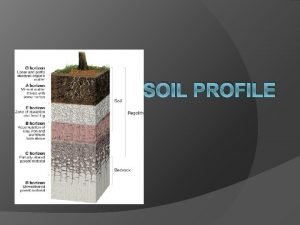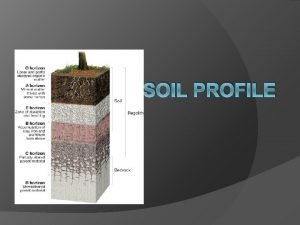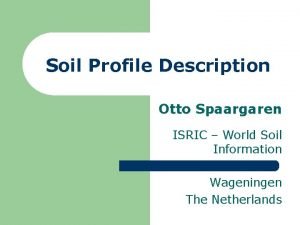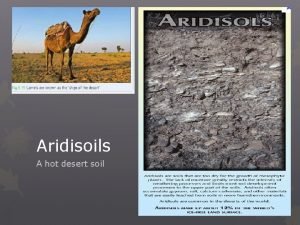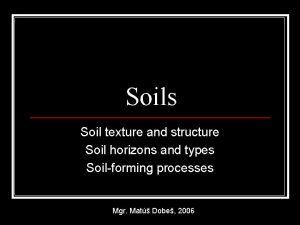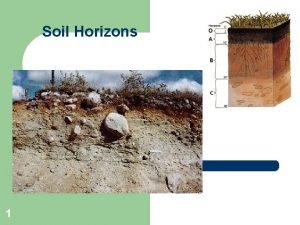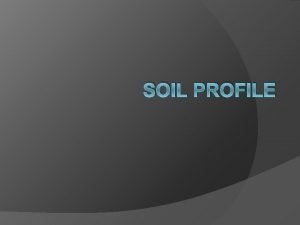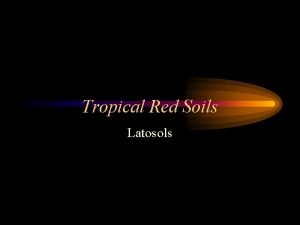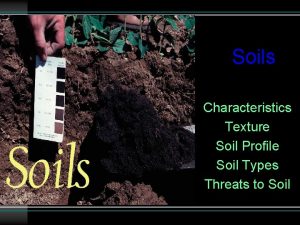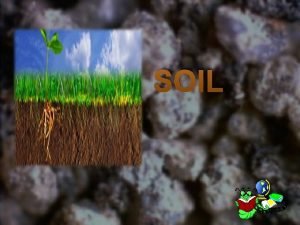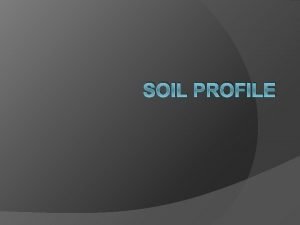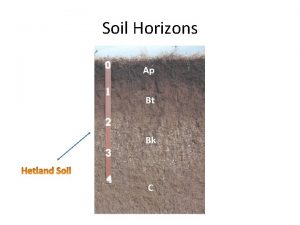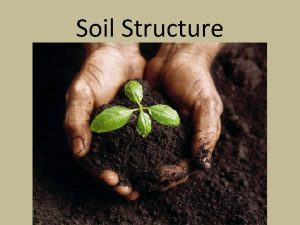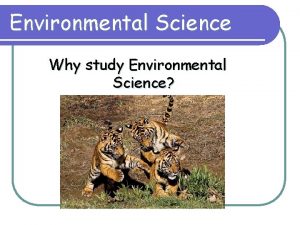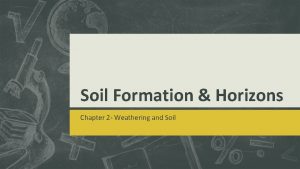Soil Profile Horizons ENVIRONMENTAL SCIENCE Soil Profile and














- Slides: 14

Soil Profile & Horizons ENVIRONMENTAL SCIENCE

Soil Profile and Soil Horizons Soil Profile – I a series of horizontal layers in the soil that differ in chemical composition, physical properties, particle size and amount of organic matter (Text, p 392). There are 11 orders with distinct soil profiles These 11 orders cumulatively are known as soil taxonomy

Soil Profile and Soil Horizons Each recognizable layer is known as a horizon There are 3 primary horizons categorized by capital letters A, B, C. Not every profile has an E horizon which is normally found between A and B. Horizon O can also be found above horizon A. While R is the bottom of the soil profile

Horizon A Topsoil A Horizon AKA Topsoil (Mineral particles & organic matter) This is the best environment for plants Can have an additional layer known as an O horizon (Organic matter that has not been decomposed) A Horizon can vary in depth depending on topography, vegetation, climate Water moves through the A layer carrying organic matter and minerals to lower layers. This is called leaching Soils and Our Environment p. 34 -36

E Horizon – Eluvial Horizon The E horizon occurs as a result of leaching of clays and organic substances. Lacks minerals and nutrients found in A and B Lighter in color Common in high rain fall areas Soils and Our Environment p. 34 -36

B Horizon Subsoil AKA Subsoil Fewer organisms and organic material Accumulates much of the nutrients leached from A and E. In many occasions there are higher amounts of clay than Horizon A ALWAYS higher amounts of clay than B Good source of nutrients for root systems that can reach this horizon Soils and Our Environment p. 34 -36

Horizon C – Parent Material Substratum Weathered parent material not affected by soil-forming processes The breakdown of parent material can happen from Mechanical/physical Weathering Chemical Weathering (Text, p. 292) No organic material Chemical composition of parent material effects p. H of soil Limestone – neutralize acids Granite – unable to neutralize acids Soils and Our Environment p. 34 -36

R Horizon Bedrock Bed rock such as: Igneous – Cooled molten rock Some rich in magnesium and Iron. Chemical weather by oxidation Sedimentary – usually much softer and porous Chemical weathering by hydrolysis (dissolving minerals) Metamorphic – Formed under intense heat and pressure Slate, marble, quartzite The harder the rock the slower it is to weather Soils and Our Environment p. 7 -10 , (Cornell University)



Each Order has a different Soil Profile Horizon Differences caused by: Accumulation of Humus (Organic material) Leaching Production/accumulation of more clay Accumulation of other minerals Soils in Our Environment p. 34 & 46

Fun Fact Only 5 % of soils remain in their original location (residual location) NRCS Soil Formation

Soil Degradation and Erosion of exposed soil by wind, water or ice Text, p. 292 Most likely to occur in areas of vegetation loss Desertification – farming, mining, overgrazing Prevention – No till farming, strip farming , Polyface Farms (Joel Salatin), using livestock to stop desertification (Allan Savory ) Deforestation – logging and farming water run off Wind blown soils Chemical Application – oils, gasolines herbicides Reduce plant growth ultimately reducing organic materials On the bright side NRCS has documented a decrease in erosion rates in farm production regions. Text, p. 299

Picture from FOA
